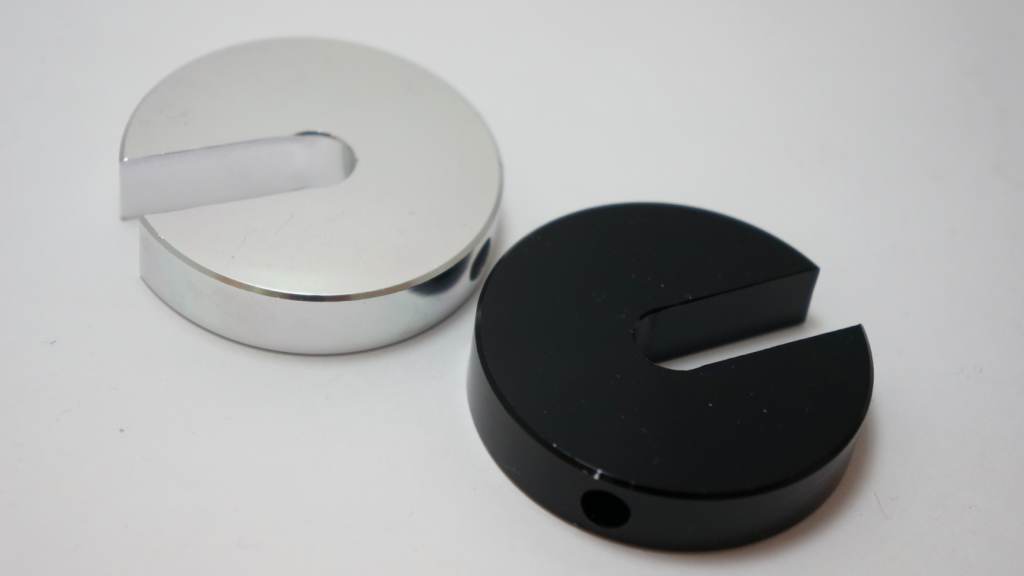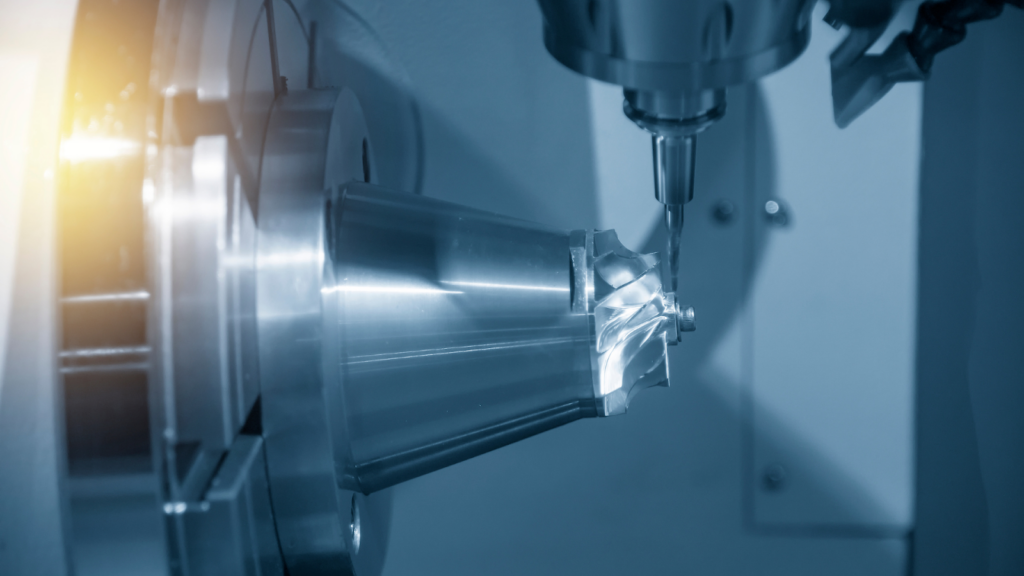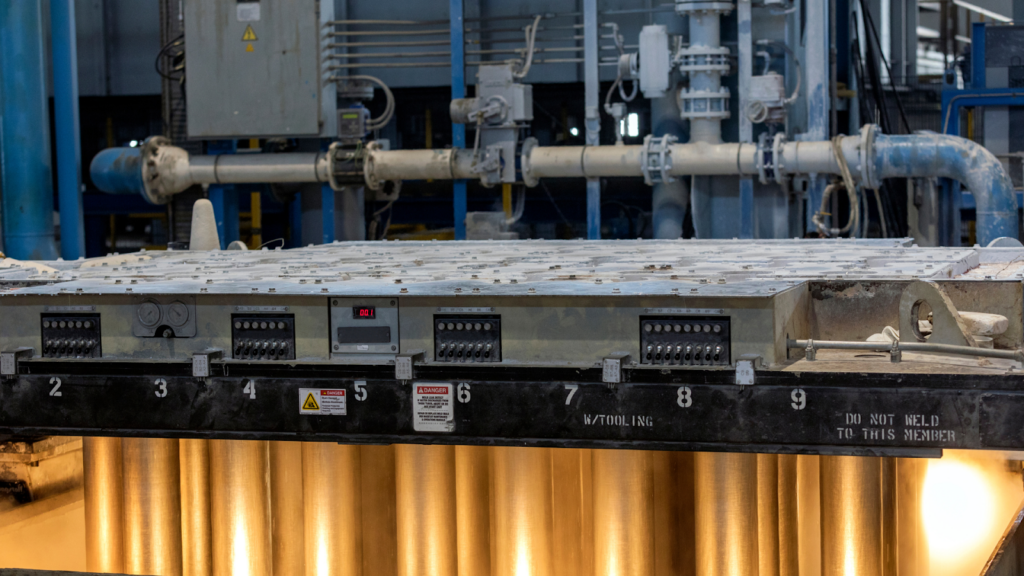Anodizing aluminum is an essential process used in the aerospace industry for improving both the durability and aesthetic appeal of aluminum components and parts. This involves passing an electrical current through an electrolyte solution containing aluminum, creating a protective layer of aluminum oxide on its surface. This oxide layer protects from corrosion, wear, and abrasion while improving the strength and longevity of aluminum parts.
Given the harsh environment that aircrafts are exposed to, such as extreme temperatures, humidity, and corrosives, anodizing aluminum is essential in the aerospace sector. Anodizing aluminum provides a reliable solution to these challenges by extending component lifespan, cutting maintenance costs, and minimizing downtime.
Therefore, aerospace industry professionals must become knowledgeable about the process of anodizing aluminum, its advantages and drawbacks, as well as the best practices for applying it to aluminum components.
We encourage you to explore our comprehensive guide on anodizing aluminum which covers all aspects of the process, from its importance in aerospace applications to frequently asked questions.
Be sure to check out our anodizing services at Valence Surface Technologies, and equip yourself with all the knowledge you need to increase aluminum component durability and longevity for aerospace applications by referring to our guide.
What Is Anodizing Aluminum?
Functionality: This is a function that utilizes an electrolyte solution and electrical current to form an oxide layer on aluminum components and parts. Anodizing aluminum offers exceptional corrosion, wear, and abrasion resistance for the metal, increasing its longevity and providing aesthetic effects such as color changes on the surface of the aluminum.
Electrolyte Solution: The anodizing aluminum submerged in an electrolyte solution and applying an electrical current, initiating a chemical reaction between the aluminum and electrolyte.
Corrosion Resistance: As a result, an oxide layer forms on the surface which provides outstanding corrosion resistance, improved wear resistance, and increased durability – making it popular in aerospace applications. Furthermore, anodized aluminum can be dyed in different colors to achieve different aesthetic effects.
Cost Efficient: Anodizing aluminum is a cost-effective and straightforward process that offers long-term protection for aluminum components and parts. Due to its superior capabilities in this regard, anodizing aluminum has become increasingly popular in aerospace applications.
How Does It Work?
Anodizing aluminum is an electrochemical procedure that creates an anodic coating on the surface of the metal. This involves using an acid solution to dissolve it and create an electrical current, triggering a chemical reaction on its surface.
The outcome is an oxide layer formed which protects against corrosion and wear – especially useful in aerospace applications where parts must withstand harsh environmental conditions.
Furthermore, the process improves the metal’s electrical conductivity – which is useful when creating components and parts requiring electrical conductivity.
Importance Of Anodizing Aluminum In Aerospace Application
The initial process to be performed is the anodization of aluminum, which plays a crucial role in aerospace applications by enhancing the strength and longevity of aluminum components. This involves creating an oxide layer on top of the metal that’s then sealed with a clear coat to increase corrosion resistance and give the alloy a sleek, glossy appearance.
In aerospace applications, aircraft components must withstand extreme conditions, which is why improving their resistance to high-velocity air and high temperatures is crucial. Anodizing can achieve this by increasing the strength of aluminum parts.
Additionally, anodizing enhances the thermal and electrical conductivity of aluminum, making it more efficient and durable when exposed to extreme temperatures and better suited for use in electrical systems.
Anodizing aluminum components not only increases their durability and longevity but can also enhance their aesthetic appeal. By adding color to the metal, anodizing provides visual interest and a protective coating that increases resistance to wear and tear – making the components even more robust.
Advantages And Disadvantages Of Anodizing Aluminum
Anodizing aluminum enhances its oxide layer to create a durable, corrosion-resistant coating. Benefits include improved durability and appearance, but drawbacks include increased cost and potential environmental impact. Here are the advantages and disadvantages to help you decide if it’s right for your project.
Advantages
Anodizing Aluminum offers several benefits for aerospace applications, with increased durability being one of them. This process creates a protective oxide layer on the metal surface that protects from corrosion, wear, and chemical damage. Furthermore, this protective layer strengthens the bond between metal surfaces and any coatings or surface treatments applied, ultimately extending component and part life in aerospace applications.
The process of anodization not only enhances the durability of aluminum but also contributes to its visual appeal. Creating different colors and finishes on components and parts makes them more eye-catching and easily distinguishable – especially useful when exposed to external elements.
Also the oxide layer created by this process strengthens the bond between the metal and any coatings or surface treatments applied, increasing its strength and decreasing failure rates.
The process also saves time and money on maintenance and repairs. The protective oxide layer created by the anodizing process minimizes wear and tear on components and parts, minimizing frequent maintenance needs and boosting efficiency in aerospace operations.
Disadvantages
Anodizing aluminum increases aerospace component durability, but not all aluminum alloys are suitable. Copper, magnesium, and silicon alloys work well, while zinc and manganese alloys may not. It also increases weight and is costly compared to other treatments.
Process Of Anodizing Aluminum In Aerospace
Anodizing aluminum is an electrochemical method that involves the oxidation of the metal’s surface to form a protective oxide layer. This shield protects from environmental hazards like corrosion and wear and tear, making it especially important in aerospace applications where anodizing aluminum helps ensure the longevity and effectiveness of critical components and parts.
Pre-Treatment
Pre-treatment of aluminum for aerospace applications is an essential step in guaranteeing its quality and durability. To accomplish this, several steps must be completed before starting the anodizing process.
- The first step of the process of anodizing is the pretreatment phase, which involves cleaning the surface of the aluminum to remove any impurities that might affect the process of anodizing. This is accomplished by mechanical, chemical, or abrasive methods of cleaning.
- When the surface is cleaned, then it should be treated using an etching solution to achieve an even finish that will be able to take anodizing. This is vital to ensure an even finish to the surface of the iron.
- Following etching, the surface has to be passivated to guard against corrosion and to provide a more durable appearance. This is accomplished by submerging the aluminum within a chemical mixture, which forms a protective layer over the metal’s surface.
- The last step is sealing the aluminum surface to prevent corrosion or damage that may occur through the process of anodizing. A chemical sealant is generally applied directly to the aluminum surface to achieve this.
Pretreatment is essential to obtain the highest quality anodized aluminum for aerospace applications. Without it, the anodizing process may not be successful, and your aluminum may be susceptible to corrosion or damage.
Post-Treatment
Post-treatment is a crucial phase in the anodizing process, particularly for aluminum components employed in aerospace applications. This step safeguards the metal against environmental factors such as wear and tear and corrosion. As part of post-treatment, the anodized layer is typically stripped away from the aluminum surface before a protective sealant is applied to prevent further deterioration.
- Post-treatment begins with immersing aluminum in a caustic solution to dissolve its anodized layer and leave the metal smooth and clean. Subsequently, water is applied to rinse away any remaining caustic solution from the surface.
- After cleaning, a sealant is applied to the surface of the aluminum to enhance its durability and corrosion resistance. Aerospace industries commonly use epoxy or polyurethane sealants for protecting aluminum components. The sealant is applied in multiple layers and then dried in an oven, creating a solid protective layer on the aluminum’s surface.
Post-treatment is the final stage in aluminum anodizing, where it is examined to ensure it meets the required standards. Any areas requiring further repair are mended before being certified fit for use.
Ultimately, post-treatment plays a vital role in maintaining aluminum components used in aerospace applications by ensuring they remain sturdy and reliable over an extended period.
Final Thoughts
Anodizing aluminum is a critical procedure for aerospace applications that must be done with extreme care. The pre-treatment stage involves several steps, such as cleaning, etching, passivation, and sealing, that must be completed to guarantee the highest quality and durability of the finished product. Likewise, post-treatment involves scraping away the anodized layer and applying a sealant to shield aluminum against corrosion and other environmental hazards.
Anodizing aluminum can be a laborious and time-consuming process, but its advantages for aerospace applications make it worthwhile. Proper anodizing can extend component and part lifespans, reduce maintenance expenses, and enhance aircraft performance and dependability. Thus, experts and reliable equipment should always be relied upon when anodizing aluminum for aerospace uses.
Understanding the anodizing process for aluminum in aerospace applications is essential for anyone working in this industry. It’s essential to follow best practices and follow proper procedures in order to get successful results. Doing so guarantees that your anodized aluminum components and parts meet the highest quality, performance, and durability standards.
We encourage you to utilize the knowledge and insights provided in this comprehensive guide when anodizing aerospace applications and reach out for expert assistance when needed.
FAQs
Which aluminum is used in the aerospace industry?
Two popular aluminum alloys used in aerospace are 7075 and 2024. 7075 is known for its toughness and is made with magnesium and zinc, while 2024 is made with magnesium and copper and is considered to be one of the strongest alloys. Both alloys are extensively used in aerospace due to their superior durability and toughness.
What is anodizing in aviation?
Anodizing safeguards aluminum components against wear and corrosion in aviation applications, protecting them from extreme temperatures, moisture exposure, and ultraviolet radiation. Additionally, this process can enhance the aesthetic appeal of aluminum parts by dyeing them in various colors that match the plane’s color scheme.
What kind of aluminum does NASA use?
NASA employs various aluminum alloys for spacecraft construction and other applications, including 2024, 7075, and 6061. 2024 is known for its toughness and is made of magnesium and copper, 7075 contains magnesium and zinc for strong durability, while 6061, made of silicon and magnesium, provides superior resistance against corrosion and good formability, and weldability.
How is aerospace grade aluminum made?
Aerospace-grade aluminum is produced through an extrusion process. In this step, hot aluminum is heated to a high temperature and then forced through a machine to create the desired shape. After cooling, it’s chilled again before being cut to the desired length. This removes any stress inside the internal area so the product meets the specifications desired.
Can 6061 aluminum be anodized?
Yes, 6061 aluminum can be anodized. Anodizing helps shield aluminum components from wear and corrosion while improving their aesthetic appeal by dyeing them to match any paint scheme.
Is anodized aluminum better than regular aluminum?
Anodized aluminum is typically considered superior to regular aluminum due to its increased durability and resistance to wear and corrosion. Additionally, anodizing can be used to enhance the visual appeal of aluminum components by dyeing them in different colors to match a plane’s paint scheme.
Why aluminum is one of the most popular metals for aerospace
Aluminum is a popular material for aerospace due to its lightweight, robust nature, and corrosion-resistant qualities. Furthermore, aluminum is easy to manipulate and can be manufactured to exact specifications at affordable costs – making it an economical choice for aerospace projects.


